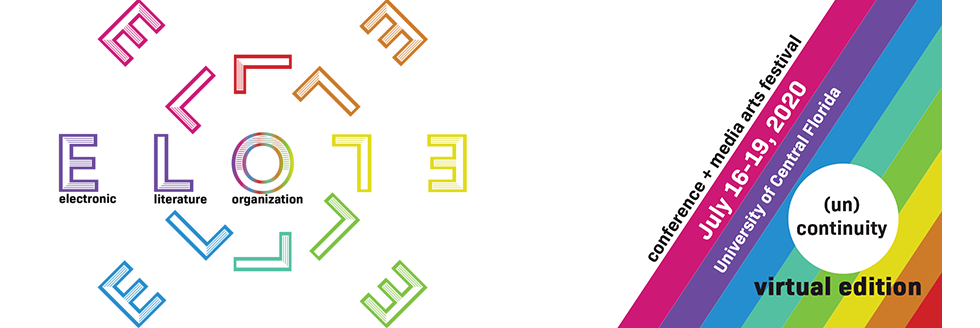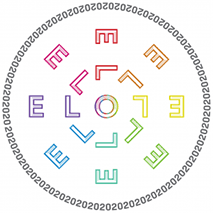Submission Type
Conference Talk - Individual
Abstract
On the surface, Aaron A. Reed’s Subcutanean looks like an innocuous enough text. It’s a short novel what happens when two college buddies, one with an unrequited crush on the other, explore unexpected chambers beneath their post-college crash pad. But like their house itself (and like several of Reed’s other works, such as The Ice-Bound Concordance), this text conceals much, most notably its own instability. While any given bound volume appears to be no more or less the product of digital processes than any other book on the market today, it actually results from complex algorithmic operations, such that every copy of Subcutanean differs from every other, and not just in incidentals.
This semester I will be teaching Subcutanean in a class on “Horror Fictions and Media Necromancy,” in which my students will be charged with collating their various copies to gain a wider picture of the readings made possible by the project. My paper, in turn, will situate these findings within the much vaster bulk of the code base, drawing on an Indiegogo backer-bonus USB stick that promises 10,000 variant Subcutaneans, as well as a critical code dive into the master source code and text base to examine the workings of the project, especially as it maps onto the unstable geometry of the house’s basement and the fluctuating desire between the two main characters.
My argument (and I note here that my initial comments on the book are based on an Advance Reader’s Copy provided by Reed, one of a set generated from a common seed that temporarily “froze” the story as an early test of the algorithm) is that, in comparison to other novels with a similar architectural conceit, such as Mark Z. Danielewski’s House of Leaves or, more distantly, Caitlin R. Kiernan’s The Red Tree, Subcutanean presents a more radically horrific experience, in that even the physical text cannot be relied on from one volume to the next; past the ARC, there is no such thing as a shared experience of Subcutanean. The end result for critics and readers alike is nothing like any other contemporary novel: spoilers may or may not apply, relations to characters and subsequent “headcanons” may branch out in radically different ways. (Even the ISBN of each volume differs from every other!) The production of Subcutanean is nothing less than the production of a vast, chaotic universe: a simulacrum of the randomness, violence, and potential horror of our own reality, extending downwards from the staircase under one twenty-something’s bed.
Under the Surface: The Horrific Instability of Aaron A. Reed's Subcutanean
On the surface, Aaron A. Reed’s Subcutanean looks like an innocuous enough text. It’s a short novel what happens when two college buddies, one with an unrequited crush on the other, explore unexpected chambers beneath their post-college crash pad. But like their house itself (and like several of Reed’s other works, such as The Ice-Bound Concordance), this text conceals much, most notably its own instability. While any given bound volume appears to be no more or less the product of digital processes than any other book on the market today, it actually results from complex algorithmic operations, such that every copy of Subcutanean differs from every other, and not just in incidentals.
This semester I will be teaching Subcutanean in a class on “Horror Fictions and Media Necromancy,” in which my students will be charged with collating their various copies to gain a wider picture of the readings made possible by the project. My paper, in turn, will situate these findings within the much vaster bulk of the code base, drawing on an Indiegogo backer-bonus USB stick that promises 10,000 variant Subcutaneans, as well as a critical code dive into the master source code and text base to examine the workings of the project, especially as it maps onto the unstable geometry of the house’s basement and the fluctuating desire between the two main characters.
My argument (and I note here that my initial comments on the book are based on an Advance Reader’s Copy provided by Reed, one of a set generated from a common seed that temporarily “froze” the story as an early test of the algorithm) is that, in comparison to other novels with a similar architectural conceit, such as Mark Z. Danielewski’s House of Leaves or, more distantly, Caitlin R. Kiernan’s The Red Tree, Subcutanean presents a more radically horrific experience, in that even the physical text cannot be relied on from one volume to the next; past the ARC, there is no such thing as a shared experience of Subcutanean. The end result for critics and readers alike is nothing like any other contemporary novel: spoilers may or may not apply, relations to characters and subsequent “headcanons” may branch out in radically different ways. (Even the ISBN of each volume differs from every other!) The production of Subcutanean is nothing less than the production of a vast, chaotic universe: a simulacrum of the randomness, violence, and potential horror of our own reality, extending downwards from the staircase under one twenty-something’s bed.





Bio
Andrew Ferguson is a Visiting Assistant Professor of Digital Studies in the University of Maryland Department of English. His research focuses on the intersections between contemporary literature and digital platforms, and in particular videogames. His writing can be found in Textual Cultures, Hypermedia Joyce Studies, and the LA Review of Books, among others; his most recent piece, on advertising and the Star Wars Holiday Special, will be out in a collection from Palgrave next year.